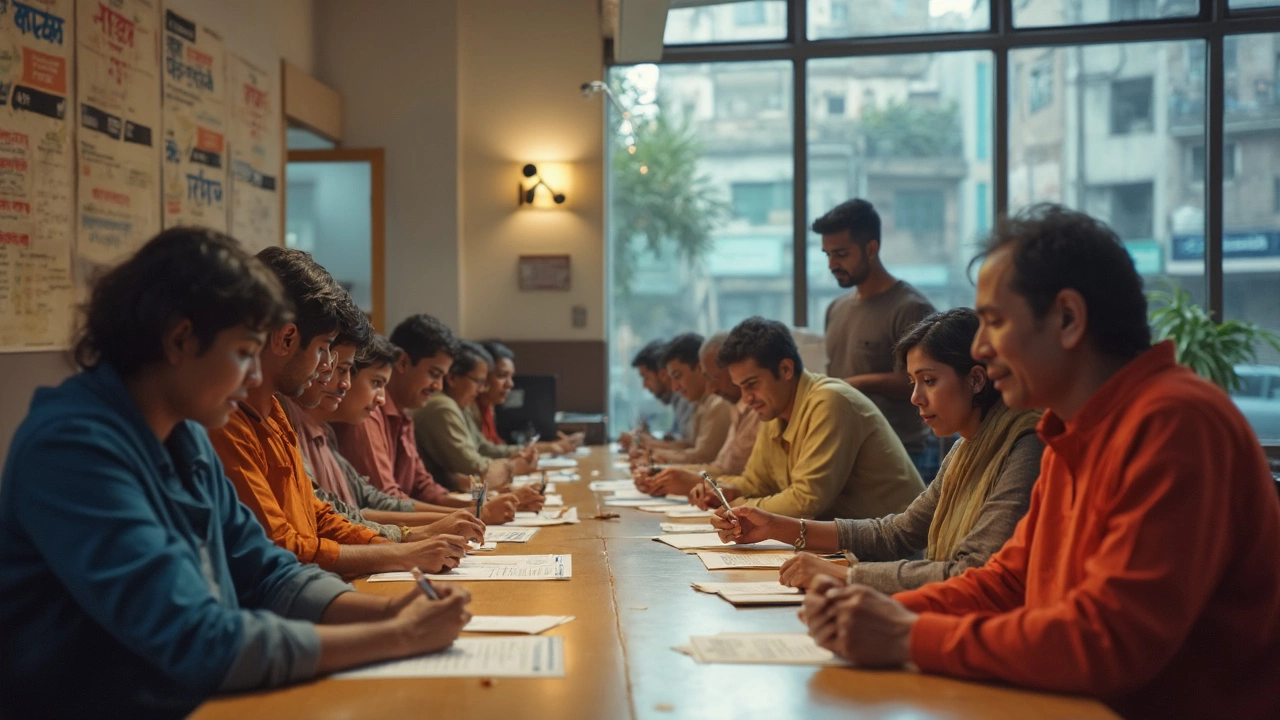If you've ever felt cheated by a shop, brand, or service in India, you're not as powerless as you might think. The law actually lets you take action, and Section 35 of the Consumer Protection Act, 2019 is your first port of call. This section is the doorway for anyone—yes, even you—to file a consumer complaint when you buy something that turns out to be bad or services that just don't deliver.
The cool part? You don't need to be a legal genius. Section 35 is designed so regular people can use it without fancy paperwork or expensive lawyers. If you know what it does, you're a step ahead the next time some company gives you a raw deal.
So if your phone died two weeks after you bought it, or if you were charged more than the labeled price at your local store, you have a clear path to push back. And you don't need to put up with getting bounced around by unhelpful customer service either. Section 35 will show you exactly where to complain, how to do it, and what details you need to have ready.
- What Exactly is Section 35?
- Who Can File a Complaint and For What?
- Step-by-Step: How to Use Section 35
- Tips, Common Mistakes, and Quick Wins
What Exactly is Section 35?
Section 35 is the part of the Consumer Protection Act, 2019 that spells out how and where you, as a consumer, can file a complaint if you’ve been ripped off or let down by a seller, product, or service in India. This is not vague legal talk—it’s the exact section you want on your side when your fridge breaks down right after buying it or your online order is a disaster. It’s all about protecting your everyday rights.
This section makes things crystal clear: any consumer or group of consumers can approach the District Consumer Disputes Redressal Commission (often called the District Forum) to get their issue sorted. You don’t need to pay a lawyer to understand it. If you’re unhappy with a product or service, you just need to know what evidence to show and where to file your complaint. Section 35 makes sure you’re not stuck running from pillar to post.
- This section covers complaints about defective goods, bad service, overcharging, misleading ads, or restricting your rights as a consumer.
- You can file a complaint online through the E-Daakhil portal (edaakhil.nic.in) or physically at your local District Commission office.
- The complaint can be made by you, by a group, or even by a registered consumer group on your behalf.
How big a deal is this? Check out these numbers from 2024. Indian District Commissions received over 1,50,000 complaints in just one year, and almost 62% of cases were resolved within six months. That’s not just fast for Indian courts; it’s fast for any legal system around the world.
| Year | Complaints Received | % Cases Resolved in 6 Months |
|---|---|---|
| 2023 | 1,25,000 | 59% |
| 2024 | 1,52,000 | 62% |
One key tip? Always keep your bills, emails, or any chats with customer service. Section 35 backs you if you have proof. The Section 35 process is there to help, but you’ve got to bring your side of the story.
Who Can File a Complaint and For What?
You might think you need to be a lawyer to file a complaint, but that's not true at all under Section 35. Pretty much anyone who's bought a good or used a service, whether alone or in a group, can go to the consumer forum. You don’t even have to be the buyer—if you're the legal heir or representative, you can step in too.
- Individual buyers who got a defective product or bad service.
- Groups of consumers, like a resident’s association facing a dodgy builder.
- Legal heirs in case something happened to the original buyer.
- Consumer organizations registered as per law—some NGOs do this to help affected people.
So, if you got sold a fake, your gym failed to deliver sessions they promised, or a company overcharged you for a service, Section 35 has your back.
What can you complain about exactly? Here’s what the law allows you to take action on:
- Defective products—like electronics that stop working or food that’s expired.
- Deficient services—think internet not working after repeated requests, or a travel agent messing up your bookings.
- Unfair trade practices—charging more than the MRP, or fake discounts.
- Restrictive practices—like being forced to buy something you never wanted as part of a "combo deal."
It’s way more common than you’d imagine. Check out some recent data from the National Consumer Disputes Redressal Commission:
| Category | Percent of Complaints (2023-24) |
|---|---|
| Defective Products | 41% |
| Deficient Services | 36% |
| Unfair Trade Practices | 19% |
| Restrictive Practices | 4% |
So, the next time someone tries to brush off your complaint, remember these numbers. Loads of people use Section 35 every year—and it actually works when you know what you’re doing.

Step-by-Step: How to Use Section 35
Filing a consumer complaint in India sounds like a headache, but thanks to Section 35 of the Consumer Protection Act, 2019, it’s way easier than most people think. Here’s how to get started if you’ve just faced a raw deal—no lawyer, no complicated forms, just straight-up steps.
- Get Your Proof Together
Before you jump in, get your bills, warranty cards, emails, or any sort of proof related to your purchase or service. Snap photos or scan documents if you want to go digital. This paperwork is what gives your complaint teeth. - Write Your Complaint
Write a simple letter explaining what went wrong—keep it clear, stick to the facts, and mention what resolution you want. For example, if your TV stopped working within its warranty, spell out what happened, what you bought, when, and from whom. Attach copies of all proof. - Pick the Right Forum
Your complaint starts with the District Consumer Disputes Redressal Commission if your loss is up to ₹50 lakh. Above ₹50 lakh and up to ₹2 crore? Hit up the State Commission. If it's over ₹2 crore, aim for the National Commission. Choosing the correct forum saves time and keeps your case from bouncing back. - File the Complaint—Online or Offline
India made things smoother with the E-Daakhil portal (edaakhil.nic.in). You can upload all your paperwork, make payments, and track your complaint online from anywhere in the country. If you prefer old-school, submit everything at the forum's office. You’ll usually need three sets of papers if going offline. - Pay a Small Fee
The fees are pretty low and depend on the amount you’re claiming. For claims up to ₹5 lakh, the fee is just ₹200. The fee goes up in small steps based on your claim amount. Get a demand draft or pay online if you use the portal.
After all this, you’ll get a case number and you can sit back as the commission takes over. They’ll notify the opposite party and call both sides for hearings. The best part? Many cases get settled in a few months, especially if you have your paperwork in order.
One extra tip: Send a copy of your complaint to the opposite party too. In many cases, just receiving this official notice nudges them into solving your problem before things even escalate.
Tips, Common Mistakes, and Quick Wins
Before you jump into filing a complaint under Section 35, it helps to know what actually works in the real world—and spot the stuff that trips people up. Here are some hands-on pointers and real-world tricks I wish someone told me sooner.
- Always keep proof: Your bill, warranty card, messages or emails about the purchase. No proof? No complaint. Seriously, your paperwork is your best friend here.
- File quickly: Don’t wait forever. The law gives you two years from the date you spot the problem. If you file late, you’ll need to explain why. The Consumer Commission isn’t always forgiving about delays without a solid reason.
- Describe your case clearly: Don’t just say “bad service.” Spell out what went wrong, what you tried to fix it, and how it affected you. Short and clear wins over long and rambling every time.
- Complain at the right place: If your claim is below ₹50 lakh, file in the ‘District Commission.’ ₹50 lakh to ₹2 crore? You need to go to the ‘State Commission.’ Over ₹2 crore, it’s ‘National Commission’ time. Filing in the wrong place can make you start all over again.
- No legalese needed: The forms are pretty basic. Just use your own words. There’s even an online portal called E-Daakhil if you don’t want to visit in person.
Mistakes people make all the time?
- Not trying to sort things with the seller first—Consumer Commissions like seeing you tried to resolve it on your own first, even if it’s just a WhatsApp chat or an email.
- Bringing complaints that don’t fit. If you’re mad your friend lost a bet, that’s not a consumer case. Stick to stuff where you’ve bought something or paid for a service.
- Being vague about what you want. Always tell the Commission exactly what you want (refund, replacement, damages—whatever it is).
- Losing receipts or deleting emails, then hoping the Commission will just take your word. They won’t.
Want some easy wins? Use the E-Daakhil platform (edaakhil.nic.in) to save time and avoid long queues. Make sure all your documents are scanned and ready—uploading blurry photos or missing files is the fastest way to get a rejection. Some states even have helplines or legal aid centers that can walk you through the paperwork.
Here’s a quick look at complaint trends to help you see where your case might fit in:
| Year | Consumer Complaints Filed | Most Common Issue |
|---|---|---|
| 2021 | 3,60,000 | Faulty electronics |
| 2022 | 3,90,000 | Online shopping fraud |
| 2023 | 4,60,000 | Fake ads & mislabeling |
So remember: proof, clarity, speed, and picking the right platform make all the difference. If you miss any of these, you’ll just go in circles. But if you get these basics right, Section 35 truly is the fastest lane for Indian consumers to get justice.
